Input interpretation

phosphoric acid
Chemical names and formulas
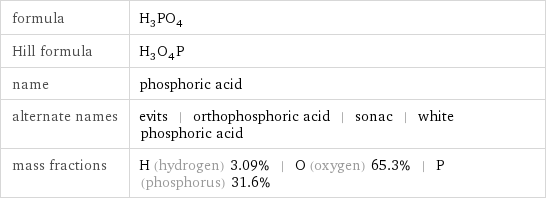
formula | H_3PO_4 Hill formula | H_3O_4P name | phosphoric acid alternate names | evits | orthophosphoric acid | sonac | white phosphoric acid mass fractions | H (hydrogen) 3.09% | O (oxygen) 65.3% | P (phosphorus) 31.6%
Lewis structure
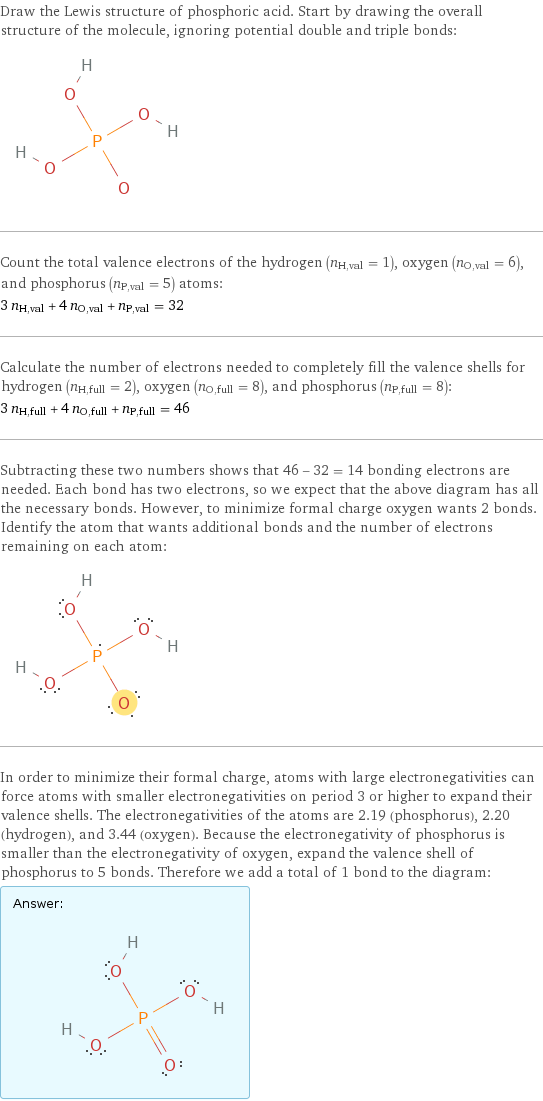
Draw the Lewis structure of phosphoric acid. Start by drawing the overall structure of the molecule, ignoring potential double and triple bonds: Count the total valence electrons of the hydrogen (n_H, val = 1), oxygen (n_O, val = 6), and phosphorus (n_P, val = 5) atoms: 3 n_H, val + 4 n_O, val + n_P, val = 32 Calculate the number of electrons needed to completely fill the valence shells for hydrogen (n_H, full = 2), oxygen (n_O, full = 8), and phosphorus (n_P, full = 8): 3 n_H, full + 4 n_O, full + n_P, full = 46 Subtracting these two numbers shows that 46 - 32 = 14 bonding electrons are needed. Each bond has two electrons, so we expect that the above diagram has all the necessary bonds. However, to minimize formal charge oxygen wants 2 bonds. Identify the atom that wants additional bonds and the number of electrons remaining on each atom: In order to minimize their formal charge, atoms with large electronegativities can force atoms with smaller electronegativities on period 3 or higher to expand their valence shells. The electronegativities of the atoms are 2.19 (phosphorus), 2.20 (hydrogen), and 3.44 (oxygen). Because the electronegativity of phosphorus is smaller than the electronegativity of oxygen, expand the valence shell of phosphorus to 5 bonds. Therefore we add a total of 1 bond to the diagram: Answer: | |
3D structure

3D structure
Basic properties
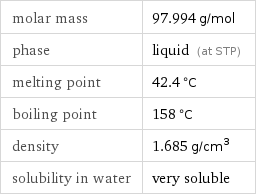
molar mass | 97.994 g/mol phase | liquid (at STP) melting point | 42.4 °C boiling point | 158 °C density | 1.685 g/cm^3 solubility in water | very soluble
Units

Liquid properties (at STP)
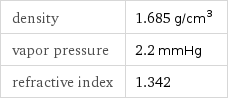
density | 1.685 g/cm^3 vapor pressure | 2.2 mmHg refractive index | 1.342
Units

Thermodynamic properties
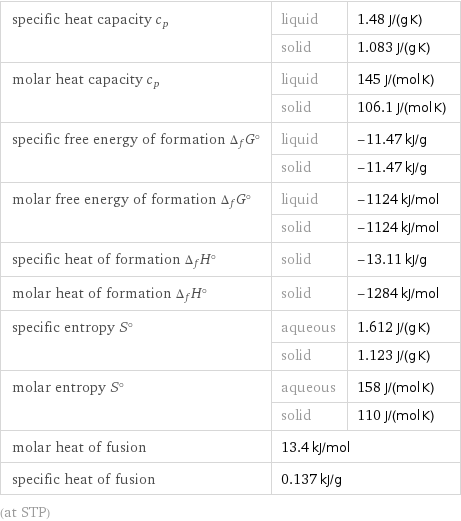
specific heat capacity c_p | liquid | 1.48 J/(g K) | solid | 1.083 J/(g K) molar heat capacity c_p | liquid | 145 J/(mol K) | solid | 106.1 J/(mol K) specific free energy of formation Δ_fG° | liquid | -11.47 kJ/g | solid | -11.47 kJ/g molar free energy of formation Δ_fG° | liquid | -1124 kJ/mol | solid | -1124 kJ/mol specific heat of formation Δ_fH° | solid | -13.11 kJ/g molar heat of formation Δ_fH° | solid | -1284 kJ/mol specific entropy S° | aqueous | 1.612 J/(g K) | solid | 1.123 J/(g K) molar entropy S° | aqueous | 158 J/(mol K) | solid | 110 J/(mol K) molar heat of fusion | 13.4 kJ/mol | specific heat of fusion | 0.137 kJ/g | (at STP)
Chemical identifiers
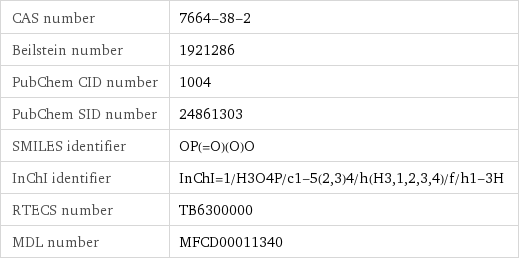
CAS number | 7664-38-2 Beilstein number | 1921286 PubChem CID number | 1004 PubChem SID number | 24861303 SMILES identifier | OP(=O)(O)O InChI identifier | InChI=1/H3O4P/c1-5(2, 3)4/h(H3, 1, 2, 3, 4)/f/h1-3H RTECS number | TB6300000 MDL number | MFCD00011340
NFPA label

NFPA label
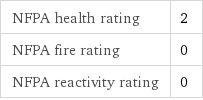
NFPA health rating | 2 NFPA fire rating | 0 NFPA reactivity rating | 0